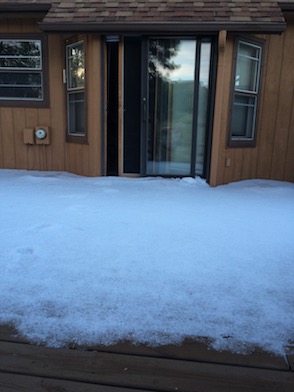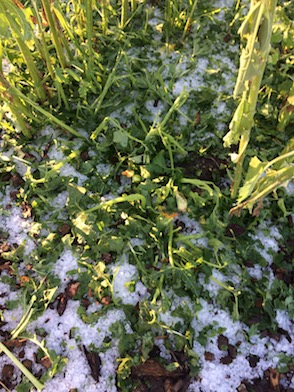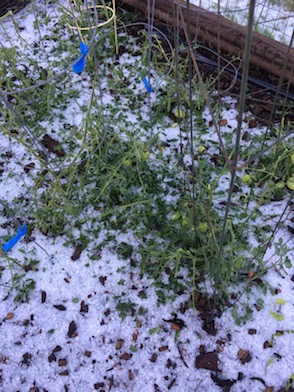Hail!
16/07/16 05:12

We were always scanning the skies even when no one was flying. An airplane heading for our airport was a potential customer and even if we were at a family gathering it might mean a trip to the airport with dad. And when there were no airplanes in the sky, we were looking at the weather. In the days before weather radar, we had fewer clues about what the weather might be in a few hours or a few hundred miles away. The Federal Aviation Administration ran numerous weather stations that used balloons to determine the windspeed and direction aloft and had weather observers who passed on information to the other stations. But a lot of our decisions about flying came from our own direct observations.
I learned the ten basic types of clouds. High clouds were cirrus, cirrostratus and cirrocumulus. Those rarely kept our airplanes on the ground, but were indications of possible icing at high altitudes, especially cirrocumulus. Cirrocumulus often indicated that a change of weather was in store. Mid level clouds were called altostratus, altocumulus and nimbostratus. These usually occur with other clouds and altocumulus are the most common clouds. Nimbostratus will lower with rain or snow and sometimes can blot out the sun. The low clouds, are definitely to be avoided by light planes. Cumulus and cumulonimbus clouds have lots of vertical movement of wind and wind sheer. They can have lots of precipitation, including hail. Stratus clouds produce drizzle, but will often break up as the day warms up. Stratocumulus clouds give beautiful sunsets and sunrises with the tops glowing from reflected light. Of all the clouds, the cumulonimbus was the most ominous.
Here in the hills we see cumulonimbus clouds almost every day in the summer. So many of those clouds form with the natural convection over the hills and then blow off over the prairies before dropping their rain and hail. Occasionally, however, the clouds park over the hills and let loose their precipitation. There are numerous reports of multiple inches of rainfall per hour when under one of these clouds.
I watched the clouds build yesterday without much thought. A little rain would be welcome. The hills are dry and I would have to water my garden in the evening if it didn’t rain. Then the rain started. I remember thinking that I hoped that it would be raining at home. In the middle of the afternoon, I had to run home. I had the wipers going all the way home, which is a good sign. As I entered the house, I heard the ping of small hail on the skylight, but that is a part of the weather around here and other than having to wait a few minutes for things to let up before dashing to the car, I wasn’t worried.
I didn’t get back home until 8 pm. I was amazed at the huge drifts of hail on the road and in the ditches. Our subdivision looked like we’d received a snowstorm, with drifts piled up around the houses. Our deck was white beneath a two-inch thick layer that had melted and merged into a solid sheet of ice.


There are still piles of unmelted hail this morning, 12 or more hours after the storm with the temperature never dipping below 55 degrees. It takes a while to melt all of that ice.
But we are not farmers. This isn’t our livelihood. I can only imagine what it might be like to look at promising wheat fields flattened. Our little garden plot doesn’t produce our livelihood. I’ve experienced a setback in a minor hobby. And we live on the top of the hill. There are folks with flooded basements and lots of other problems in low lying areas.
We got hailed on, but we’re not wiped out. I’ll keep my eyes on the sky.